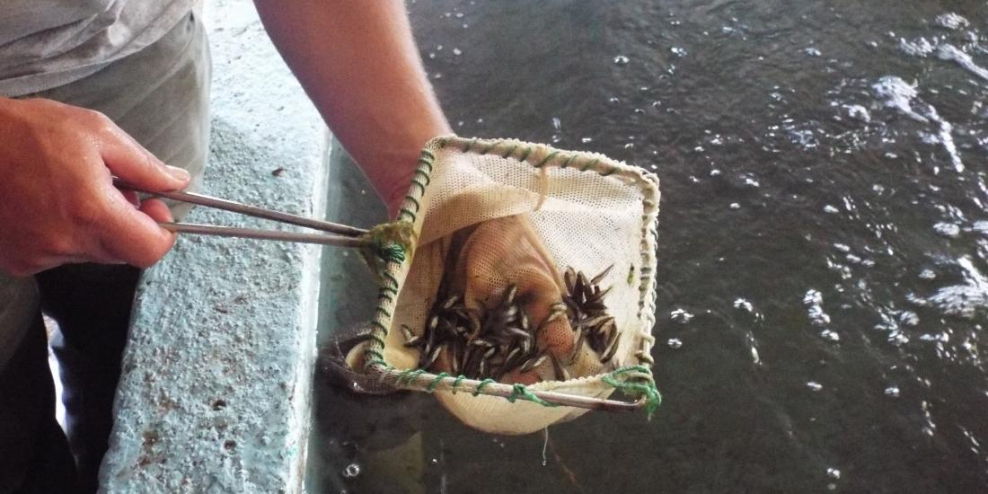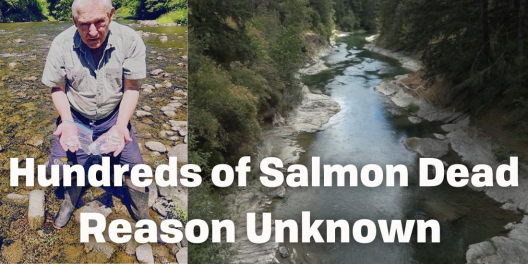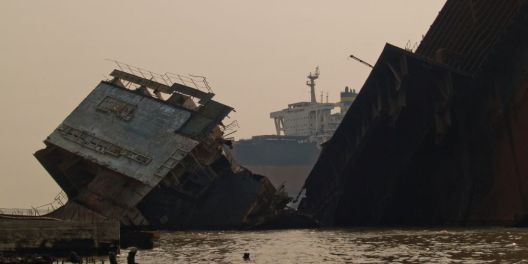Fish hatcheries have played a central role in North American salmon management for more than a century. In the early days, it was a case of simple math. Adding millions of hatchery-produced fish into salmon streams was an easy way to make up for reductions in salmon stocks caused by human and other impacts.
It seemed to make good sense. Recreational and commercial fishers sure would be happy.
But the impacts of hatcheries on wild stocks are far more complex than first thought.
Aaron Hill, executive director of Watershed Watch Salmon Society, raises four fish hatchery red flags that scientists have been waving for years.
First, fish hatcheries keep lots of fish alive, even ones that might not have survived in the wild. Those fish can breed and spread weak genes, which makes the whole population a bit weaker.
Second, hatchery salmon compete with wild salmon. There’s only so much food and spawning habitat to go around.
Third, flooding the ocean with hatchery fish can increase overall fishing pressure. That’s because hatchery and wild salmon migrate together. So if fishers are allowed to fish to levels made up of hatchery and wild fish, but then we stop breeding hatchery fish, all that’s left are the wild ones.
Finally, fish hatcheries can help spread disease.
And the million-dollar question is, if we are producing more hatchery salmon, why are there not more salmon in the ocean?
Research suggests hatchery fish have a harder time surviving in the wild. So we spend money breeding fish that we never get a chance to catch.
In the United States, the debate around fish hatcheries has been going on for decades. But in Canada? Not so much.
For most people, hatcheries are just part of good salmon management. Hill thinks it’s time to ask some hard questions about fish hatchery impacts.
“There’s a strong push for more fish hatcheries in BC right now,” Hill says.
Salmon enhancement is one of the four pillars of the $647 million Pacific Salmon Strategy Initiative that Fisheries and Oceans Canada announced in June 2021. And Hill says there’s a pro-hatchery bias within John Horgan’s NDP government that is shaping provincial policy.
There’s a place for hatcheries, Hill says, especially to help preserve and recover special stocks that are almost extinct.
The case for and against fish hatcheries is far from black-and-white. The Pacific Fisheries Resource Conservation Council highlighted that back in 2004 in their study, Making Sense of the Debate About Hatchery Impacts.
In the study, the authors note that “ocean and climatic conditions, in particular, have effects that may be significant but are difficult to distinguish from the impacts of enhancement.”
They also highlight the fact that different species face different impacts. For example, because wild pinks and chums are not generally produced in hatchery environments and don’t spend much time in fresh water, they have a lower risk of bad impacts. Not so for chinook and coho.
“Large production and high survival rates of hatchery chinook and coho can contribute to harvest rates that are too high for wild fish to sustain,” according to the report.
There are other things to consider, like the timing of releases from hatcheries that can affect their chances of being caught in mixed-stock fisheries. The size of the fish when released also influences harmful impacts.
When this report was released, about 600 million juvenile salmon and 850,000 juvenile steelhead and cutthroat trout were being released every year from salmon enhancement projects in BC and the Yukon.
Today, 300 million are released to BC waters every year.
In 2019, the Pacific Salmon Foundation launched the Hatchery Effectiveness Review into current science and research surrounding fish hatcheries. The soon-to-be-released report was funded by the BC Salmon Restoration and Innovation Fund.
Hill hopes it will put the brakes on fish hatchery expansion before the feds and the province double down on salmon enhancement.









